
Guests
- Rebecca Grantauthor and freelance journalist covering reproductive rights, health and justice.
Part 2 of our conversation with journalist Rebecca Grant, who writes about reproductive rights. She outlines the alternative healthcare methods that many are forced to turn to in the face of dangerous and, since the fall of Roe v. Wade, increasingly draconian abortion restrictions. “We know throughout history that making abortion illegal or trying to ban it does not make it go away,” she says. This underground network of abortion access in the United States is the subject of Grant’s new book, Access: Inside the Abortion Underground and the Sixty-Year Battle for Reproductive Freedom.
Transcript
AMY GOODMAN: This is Democracy Now!, democracynow.org, The War and Peace Report. I’m Amy Goodman.
Three years ago this week, the Supreme Court overturned Roe v. Wade. In 2023, the first lawsuit after the decision was filed by five women. They sued Texas after they were denied abortions even as their pregnancies posed serious risks to their health and were nonviable. This is one of those plaintiffs, Amanda Zurawski.
AMANDA ZURAWSKI: I cannot adequately put into words the trauma and despair that comes with waiting to either lose your own life, your child’s life, or both. For days, I was locked in this bizarre and avoidable hell. … In a matter of minutes, I went from being physically healthy to developing sepsis, a condition in which bacteria in the blood develops into infection with the ability to kill in under an hour.
AMY GOODMAN: Amanda Zurawski, talking about what happened to her with Texas’s abortion ban. Well, she was on Capitol Hill this week, three years after the Supreme Court overturned Roe v. Wade in its Dobbs decision, as part of a group of over a hundred women who call themselves abortion storytellers, speaking with lawmakers, as well as speaking publicly about their experiences.
We continue our conversation now with Rebecca Grant, author of the new book, Access: Inside the Abortion Underground and the Sixty-Year Battle for Reproductive Freedom. In Part 1 of our discussion at democracynow.org, we talked about the Supreme Court decision to back efforts by South Carolina to defund Planned Parenthood by removing its health clinics from the state’s Medicaid program, a 6-3 decision. But now we want to go more deeply into Rebecca Grant’s book Access. Again, the subtitle, Inside the Abortion Underground and the Sixty-Year Battle for Reproductive Freedom.
In Part 1, Rebecca, we started to talk about some of the heroines in your book. But if you can take us back, why you go back 60 years, to talk about abortion in this country, how it’s been dealt with, but your story of the resistance is global?
REBECCA GRANT: Yes, I decided to start the book in 1965, because I was really interested in what the activism looked like for, you know, people fighting for abortion rights, people fighting for abortion access in the years before Roe. And, you know, there was, of course, lobbying efforts and people who were focused on politics in the courts. But what I found, which really resonated with a lot of the current-day reporting that I’ve been doing, was that there were also a lot of feminist activists who were more focused on trying to make accessing abortion safer.
And so, you know, certainly before Roe, we continued to hear a lot about this idea of back-alley clinics. I mean, women would really take their lives into their hands when they sought illegal abortions. They didn’t know if the providers were adequately trained, if they were using clean or safe materials, if they would be attacked or robbed as part of the process. And so, you know, complications from unsafe abortion were rampant. Hospitals had wards called “infected OB,” because it was such a big problem.
And so, there was these feminist activists who thought, “OK, what can we do to make abortion safer?” And so, that looked a bunch of different ways. Like, some of them created a vetted catalog of abortion providers that they could refer women to. The Janes, as they became known in the Chicago area, ultimately taught themselves how to perform abortions, and they helped about 12,000 women access abortion in the years leading up to Roe. Other activists helped kind of innovate on an early abortion procedure that was much less invasive and something that laypeople, laywomen could do amongst themselves.
And so, I really wanted to capture what that form of activism looked like in the years leading up to Roe, and then how it sort of disappeared after Roe because we had legal abortion, we had clinics in this country. And then, now, after Dobbs, we’re seeing the resurgence of these types of underground forms of activism, although it looks very different in some ways, because we have access to medication abortion, to abortion pills now.
AMY GOODMAN: Now, that’s absolutely key, this double-pill abortion medication protocol. And what I was so struck by when I saw you in New York, when you did your first book reading and conversation, was the fact that post-Dobbs — and tell us why it’s called Dobbs, but post-Dobbs, post the Supreme Court overturning Roe v. Wade, abortions have increased in this country, even as state after state imposes increasingly draconian abortion bans.
REBECCA GRANT: I think the fact that abortions have gone up in the wake of Dobbs is really a testament to the incredible resilience and determination and courage of the abortion access movement. And I think a lot of that, those increases, have been driven by the fact that abortion is now much more accessible, because of telemedicine abortion care, than it ever was before. And so, during the pandemic, during COVID, the FDA changed its regulations. It previously had stated that mifepristone, which is the first drug as part of the two-part protocol, could not be mailed outside of kind of — there was a some studies that were looking at the efficacy of telemedicine abortion, but for most people, you couldn’t legally go to an online resource, be evaluated by a clinician and have them send you the medication in the mail. You had to pick the medication up at a brick-and-mortar clinic. And so, that entailed all of the barriers that going to access a procedural abortion would. People would have to drive many hours. They would have to take time off work. They would have to find child care. They would have to figure out accommodation if they were seeking abortion in a state that had a mandatory waiting period. And so, abortion was already very inaccessible for large parts of the country before Dobbs. And what mailing did was said that, you know, if this is a good fit for you for — you know, based on your eligibility, you can receive these pills at home, and they’re a very safe and effective way to end your pregnancy.
And so, now, you know, a couple years after Dobbs and kind of in the wake of COVID, one in five abortions that happen across the country are happening via telemedicine. And so, that sort of has been, I think, a really important factor, and then also the way that the kind of abortion fund movement has really stepped up to help people travel out of state for abortion care in increasingly significant ways. So, abortion funds have been around since the '90s, and they've been doing really critical work ever since then, but between 2020 and 2023, the rates of people traveling out of state for abortions have doubled. And abortion funds are dispensing tens of millions of dollars, although many of them are struggling with funding, as well. And so, I think that it’s also a testament to this entire ecosystem that was just like, “We’re not going to accept this. You know, an abortion ban does not mean that people can’t access abortions, and we’re going to figure out whatever we can do to ensure that they can do that safely.”
AMY GOODMAN: So, tell us how it was figured out that mifepristone and misoprostol — talk about these two drugs and how they ended up being used for abortion. And this is where the story goes global.
REBECCA GRANT: Yes. So, mifepristone was developed. It was developed in France in the 1980s, and it was really developed with the intention that it would be a drug that could interrupt an early pregnancy. And so, mifepristone has to be taken in conjunction with a drug that causes contractions. What mifepristone does is it sort of works as like a hormone blocker to prevent a pregnancy from continuing.
And so, while mifepristone was kind of being developed, around the same time that it was approved in France, a group of kind of women on the ground — and there’s sort of some myth around this, but there were women in Brazil, which had really high rates of maternal mortality and abortion complications, and abortion was banned. Laywomen in Brazil started realizing that there was a drug called misoprostol, which had a warning on it, on the box, that said something along the lines of “Do not take if pregnant, or could cause miscarriage.” And so, through word of mouth and, you know, some kind of, like, experimentation and discussions with pharmacists, Brazilian women realized that if they bought this over-the-counter ulcer medication, that they could safely and effectively manage their abortions outside of any kind of medical or legal system and without having to go to a clinic. And the effect of that and how this information spread by word of mouth was so significant that public health officials and doctors and hospitals in Brazil noticed a precipitous drop in complications from unsafe abortion.
And so, kind of over the years, awareness of the dual protocol of mifepristone plus misoprostol, which is sort of considered to be kind of like the gold standard, the recommended World Health Organization protocol, that has become a norm for abortion provision. It now represents some 63%, I believe, of abortions in the U.S. But misoprostol can also be used on its own to provide an abortion. And since in many parts of the world and all over Latin America misoprostol is available in pharmacies, all different forms of kind of underground, word-of-mouth, peer-to-peer networks sprung up to help people access abortions just with the misoprostol alone.
AMY GOODMAN: Talk about the movement in Mexico.
REBECCA GRANT: Yeah. So, in the book, one of the main characters is an activist named Veronica Cruz, who goes by “Vero,” and she started organizing around — you know, really focusing on abortion quite a lot around the year 2000, when the state that she lived in, Guanajuato, was — the government was trying to remove one of the very limited exceptions that it had to its abortion ban. And so, Vero was part of the effort to stop that change from going into effect, and they were successful. And so, that meant that rape victims were able to legally access an abortion in the state.
And so, Vero started hearing from women who had been raped and were looking for abortion care, and she found an OB-GYN who she could take them to, who was willing to provide them with procedural abortions at first. But then, when that OB-GYN learned about medication abortion, she started providing the patients with the medication. And then Vero saw that and thought, like, “I could do this. It’s not that complicated. You just ask some, you know, kind of evaluation questions. And here’s — explain the protocol and let people know what to expect.”
And so, Vero went on to develop what’s known as the accompaniment model, where women are sort of provided support and told that they can go to the pharmacy and purchase these medications, and then, if they have leftover pills, which they often would, because the boxes usually had 28, and they only needed 12 to 16 pills, they could pass their extras on to the next person who needed abortion support. And in addition to helping with the medication, they could provide emotional guidance and sort of, you know, support that way. And so, then the people who came to seek help ended up being drawn into the movement, and they went on to help other people. And so, in this very organic way, this accompaniment model spread all over Mexico. And in 2021, when the Mexican Supreme Court ruled in a decision to decriminalize abortion in the country, it referenced kind of the accessibility of medication abortion and the accompaniment model as one of the factors.
AMY GOODMAN: And then there’s Dr. Rebecca Gomperts. Tell us her story, Rebecca.
REBECCA GRANT: Dr. Rebecca Gomperts is a Dutch doctor, and she is the founder of an organization. Her first organization was called Women on Waves, and it was started with this really radical idea, which was that she and her team would sail boats off the shore of countries that had abortion bans, starting in Europe, and they would find abortion seekers, or they would be contacted by abortion seekers, and they would then take those abortion seekers out into international waters, where the national laws didn’t apply, but, rather, the laws of the Netherlands, where the boat was flagged to, and they would provide them with medication abortions at sea. And so, she did this. The first campaign that she launched was to Ireland, although they were not able to provide medication abortions at the time because there were some sort of legal questions. But then, a couple years later, she did a campaign to Poland, and they successfully provided medication abortion to, I believe it was, about a dozen women.
And, you know, these were very kind of media catnip campaigns, but really what they were meant to do was to raise awareness about the issue, to raise awareness about medication abortion, and to, in this really kind of powerful and subversive way, you know, subvert these abortion bans. And so, Women on Waves in 2005, 2006, after doing Women on Waves for a couple years, Dr. Gomperts realized that she wanted to be able to support more women on a larger global scale, because Women on Waves, while it, you know, attracted a lot of attention, ultimately was only able to provide abortions to a couple dozen women. And so, she launched a global telemedicine service in 2006 called Women on Web, and that was really the first telemedicine service for abortion. And she helped, you know, I think, over 100,000 people have access to abortion care through Women on Web over the years.
And in 2018, she created a third organization called Aid Access, which was really meant to bring the Women on Web model of global telemedicine abortion to the U.S. And this was before medication abortion could be mailed, and so it was kind of the first time in the U.S. that people could just go to a website and, you know, do the evaluation and receive that medication. And so, today, Aid Access is one of the, or arguably, I guess, the kind of leading provider of medication abortion to all 50 states. And they work with shield law providers who are clinicians in blue states. And the most recent numbers that I saw are that they’re providing around, I think it’s like, 7,700 medication abortions a month, which is pretty, pretty impressive.
AMY GOODMAN: And explain exactly, Rebecca Grant, what that means. And that goes to, among others, Dr. Linda Prine here in New York. If you could tell us more about her and the kind of work that she does, how people get in touch with these doctors through telemedicine, something that really blossomed during the pandemic?
REBECCA GRANT: Yeah, so, you know, Aid Access, I think, is the largest provider of the telemedicine abortion care by volume, although over the past couple years there have been many, many more practices that have sprung up. And so, sometimes it could depend on the state that you live in and what the specific rules are and what options are available to you. But for Aid Access, people can go to the website, and there’s an online form, and you fill out the information, and then these licensed providers, who are doctors and nurses and midwives, they will evaluate the prescriptions. And if someone is eligible, they will write those prescriptions and have them sent to the address that they want. And so, it’s a pretty creative, I think, way that — or just yet another creative example of how providers and kind of the abortion rights movement has really stepped up to preserve access.
And so, you know, these shield laws were something that after Dobbs, when blue states were like, “What can we do to protect abortion access both within our states and also for people who are in other states that have abortion bans?” and these shield laws were passed that said that if there is a provider who’s licensed in our state — let’s say, New York — and they write a prescription for someone who’s in, let’s say, Texas, that if Texas tries to sue or indict or bring criminal charges or go after these doctors, we won’t participate. We won’t cooperate in that. We will protect these clinicians. And so, I think that certainly we can expect that these sort of interjurisdictional, interstate conflicts are going to be an arena for some legal fighting in the years to come. They have been an absolutely critical way that people have been able to access abortion over the past couple years.
AMY GOODMAN: And why haven’t Republican legislatures cracked down harder on these medication — these abortion medication pills?
REBECCA GRANT: I mean, they’ve been trying. I think that they will — they have been trying, and they will continue to try until they are successful, or if they’re not, they’ll probably just keep trying. I mean, I think, if anything, Dobbs has revealed the extent of their persistence and determination. So, you know, there have been some lawsuits that have tried to challenge mifepristone. You know, Texas sued a New York shield law provider, and Louisiana has brought criminal charges against a shield law provider for sending medication abortion. And so, as I said before, I think that, you know, those could be some potential ways that, through the courts, that anti-abortion politicians are trying to restrict it.
And then also, there’s this very ongoing effort to challenge the science, the clearly established, you know, over 100 peer-reviewed studies that have said that medication abortion is safe, but now there’s these efforts to kind of try to claim that mifepristone or medication abortion is much more dangerous than it actually is, and as part of that, you know, to have the FDA put tighter regulations on it or sort of, you know, revoke the regulations on it. And RFK Jr. had said that he was open to hearing more about whatever, you know, that report claimed to say. And so, I think that there’s a couple vectors of attack — at the state level, through the courts, and, you know, at a federal level, as well.
AMY GOODMAN: And talk about what happened in Poland.
REBECCA GRANT: In 2020, so, early on, when the world was shutting down because of the pandemic, there was a woman who I’ve interviewed, and her story is included in the book, and I also did an article about it a couple years ago. But her name was Anya, and she found herself pregnant, and she was in an abusive relationship, and she already had a small child at home. And the pregnancy made her incredibly ill. I’m probably going to butcher the pronunciation, but she had hyperemesis gravidarum, but, basically, it meant that she was just violently sick. She was throwing up all the time, and so she wanted to end the pregnancy.
But Poland is one of the few countries in Europe that had an abortion ban, and so she had to figure something else out. And many Polish women would travel abroad for abortion care. They would go to Germany. They would go to the U.K. But because international borders were shutting down, that wasn’t an option. And she also was too sick to travel. And so, she reached out to kind of an activist group or network, and one of those activists, Justyna, she ended up — she had a personal supply of medication abortion at her home, and she sent the package to this woman, Anya. And Anya’s partner found it. He intercepted it. He reported it to the police.
And so, Justyna was — a year later, in 2021, she was charged with aiding and abetting an abortion. And so, I went to Poland to report on the last day, on the day that her sentencing came down in the trial. And she was the first activist in Europe to be indicted and then subsequently convicted of this type of crime. And so, her case is still making its way through the Europe — the Polish court system and the European court system. But it was a really kind of — both a troubling development, but also a sign that, you know, anti-abortion politicians are not afraid to go after activists or anyone who they consider to be aiding and abetting an abortion.
AMY GOODMAN: Rebecca Grant, you spent a long time researching your book, Access: Inside the Abortion Underground and the Sixty-Year Battle for Reproductive Freedom. What gives you the most hope?
REBECCA GRANT: I have been incredibly excited and inspired and impressed by the resilience of people who are stepping up. And I think that there are some folks who have been in kind of reproductive rights, health and justice activism for a long time, and there are people who were incredibly galvanized and angered by the Dobbs decision and wanted to step up. But whether these are shield law providers, like Dr. Linda Prine, who you mentioned before, or they’re some of the kind of underground community support pill distributors, who I also profile in the book, I mean, these are people who are putting themselves on the line, who are taking risks, who are really kind of making — doing whatever they can to make sure that people have access to abortion in all 50 states, in a way that I think — just it does give me a lot of hope, because I think for so long in the U.S., we’ve been so obsessed with, you know, what the law says and politics and the courts and rights.
And I think, to me, what these activists are saying is that, you know, they don’t — like, those forces, like, the government, does not get to determine if, when or how you get pregnant. They do not get to determine what you do with your body or what you do with your family. It is not up to them. It is up to you. And we are going to do whatever we can to both help you and support you in your choices, and also to subvert these laws that are incredibly unjust and harmful. And I just think that there’s something a little bit — that feels a little bit liberating and freeing about that idea of, like, the Trump administration can try to throw and these states can try to throw whatever they want, but there is — there are these groups and these individuals operating who are just never going to let them win.
AMY GOODMAN: Rebecca Grant, author of the new book, Access: Inside the Abortion Underground and the Sixty-Year Battle for Reproductive Freedom. To see Part 1 of our discussion, go to democracynow.org. I’m Amy Goodman. Thanks so much for joining us.

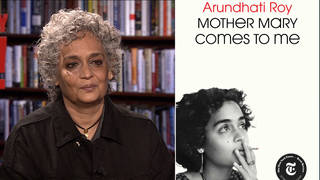
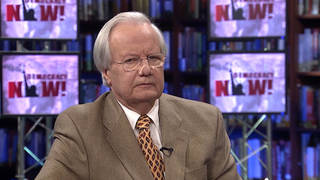



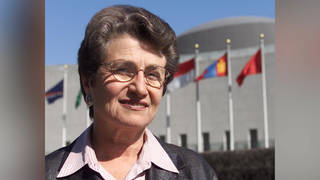
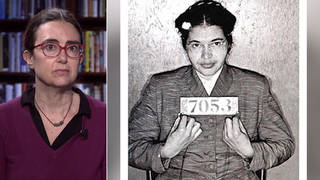
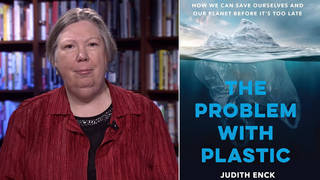
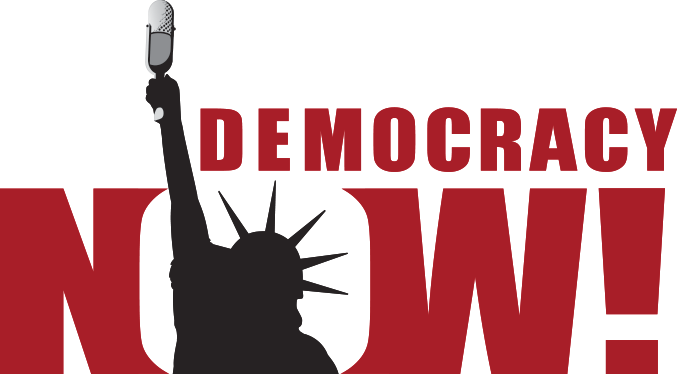
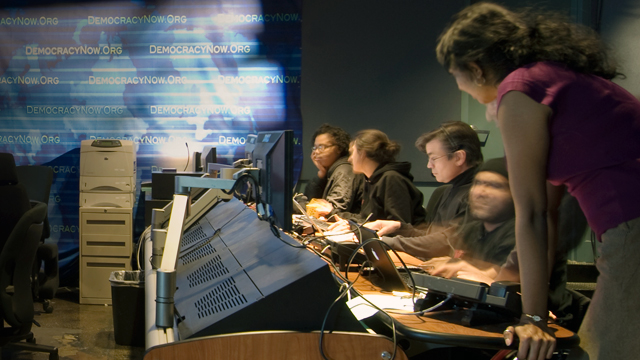

Media Options